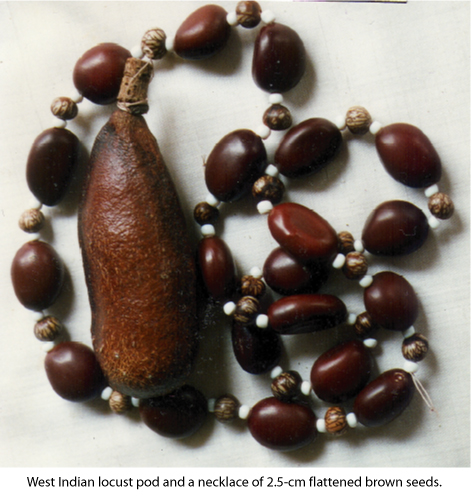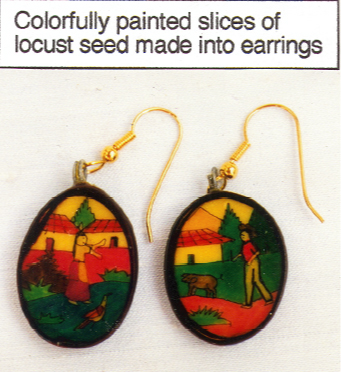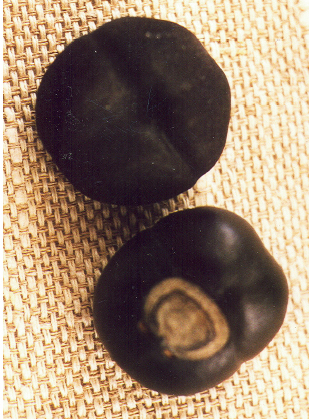
Mary’s bean, Merremia discoidesperma, also has a common name of “crucifixion seed” which derives from the distinctive cross embedded on one side. Some seeds of this woody vine of the mixed forest flora of Central American drift to the shores of northern Europe. There at one time they became treasured objects for the people who found them. Because they had survived the ocean voyage, their inherent protective powers, they believed, would extend to their present owners.
In the Hebrides a woman in labor was assured an easy delivery if she clenched a seed in her hand during labor. Daughters inherited seeds from their mothers.

